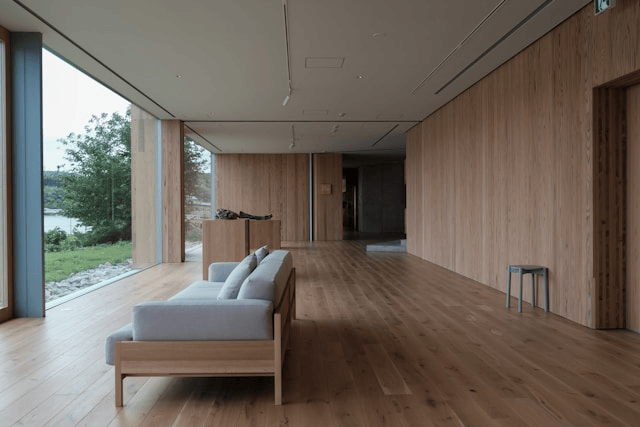Open-concept living spaces have become a staple in modern interior design. They offer a sense of spaciousness, improved natural light, and seamless interaction among different areas of the home. But while they may look effortless in magazines and showrooms, designing an open-concept layout requires thoughtful planning. The challenge lies in balancing openness with function, creating distinct areas without walls, and making everything feel cohesive.
In this guide, we’ll walk you through how to design an open-concept living space that works beautifully for your lifestyle combining style, comfort, and functionality.
What Is an Open-Concept Living Space?
An open-concept living space typically combines the kitchen, dining area, and living room into a single, expansive layout without walls or doors separating them. This design enhances connectivity, fosters togetherness, and allows for a better flow of natural light. Whether you’re hosting a dinner party or watching kids while cooking, the open layout supports easy interaction.
However, designing for such a layout comes with challenges like managing noise, ensuring proper zoning, and avoiding visual clutter.
Planning the Layout
Before you buy furniture or choose paint colors, the first step is mapping out your space.
-
Identify Zones: Divide the area into three main zones kitchen, dining, and living. Think about how you use each space and the order in which you move through them.
-
Traffic Flow: Make sure there’s a natural and unobstructed path through the space. Avoid placing furniture in walkways and ensure there’s at least 3 feet of clearance around key traffic zones.
-
Measure Accurately: Measure your room and use a layout app or graph paper to create a to-scale plan. This will help you visualize how much space each zone can comfortably occupy.
Planning is crucial in open floor plan design, as it ensures each area is functional without interrupting the overall flow.
Creating Visual Separation Without Walls
In an open-concept layout, physical walls are gone but you can still define each area using subtle visual cues.
-
Area Rugs: A large rug under the dining table or seating area can help visually separate zones while adding warmth.
-
Furniture Placement: Use your furniture to create natural boundaries. For example, the back of a sofa can act as a divider between the living area and the dining space.
-
Lighting: Pendant lights above the kitchen island or a chandelier over the dining table can anchor each area.
-
Paint and Ceiling Treatments: Slight variations in paint color or ceiling materials (like exposed beams or dropped panels) can create a sense of division without interrupting openness.
-
Open Shelving or Half-Walls: Low bookcases or open shelving units provide both function and visual division.
These decorating open spaces techniques allow each area to maintain its purpose without compromising the open feel.
Choosing a Cohesive Color Scheme and Style
One of the biggest design mistakes in open layouts is using clashing styles or color palettes. Consistency is key.
-
Stick to One Main Color Palette: Use complementary shades and tones across all zones. For example, warm neutrals like beige, taupe, and ivory can work across kitchen cabinetry, dining furniture, and living room textiles.
-
Use Accents Strategically: Add pops of color through accessories like throw pillows, artwork, or bar stools—but ensure they tie in across the zones.
-
Coordinate Materials: Choose consistent wood tones, metal finishes, or tile patterns that help unify the entire space.
This consistency ensures your open concept interior design feels polished and cohesive rather than chaotic.
Furniture Selection and Arrangement
Open layouts demand well-thought-out furniture choices.
-
Scaled Furniture: Choose pieces that suit the proportions of your room. Oversized sectionals may crowd a smaller open layout, while undersized furniture can feel lost in a large one.
-
Floating Furniture: Rather than pushing everything against walls, “float” your sofa or chairs to define spaces and improve flow.
-
Modular and Multi-functional Pieces: Ottomans that double as storage, nesting tables, or benches with hidden compartments are ideal for maximizing functionality.
Well-arranged furniture is central to decorating open spaces without making them feel cluttered.
Lighting Strategies
Lighting does more than illuminate it helps define zones and set the mood.
-
Layered Lighting: Combine ambient (ceiling fixtures), task (under-cabinet lighting, reading lamps), and accent lighting (wall sconces, decorative pendants).
-
Use Statement Fixtures: Install eye-catching lights like chandeliers or pendant lights to draw attention and define areas like the dining table or kitchen island.
-
Maximize Natural Light: Keep window treatments light and airy to allow in as much sunlight as possible. Use mirrors to reflect natural light and make the space feel even more open.
Proper lighting supports both the form and function of your open-concept living space.
Storage Solutions
Open layouts mean fewer walls and corners to tuck things away, so smart storage is essential.
-
Built-In Units: Maximize vertical space with built-in cabinets, floating shelves, or custom wall units.
-
Furniture with Hidden Storage: Coffee tables with drawers, storage benches, or ottomans with lift tops keep essentials nearby but out of sight.
-
Decluttering Tips: Use baskets and trays to organize loose items. Establish “zones” for everyday necessities so everything has its place.
Creating efficient storage keeps your open layout neat and welcoming key for maintaining a truly hazard-free, clutter-free look.
Adding Personality and Warmth
While functionality is important, your home should also feel personal and inviting.
-
Add Greenery: Houseplants soften sharp corners, add color, and improve air quality.
-
Use Textiles: Layer throw pillows, rugs, curtains, and blankets to add warmth and texture.
-
Display Personal Items: Show off art, travel souvenirs, or books to tell your story without over-decorating.
-
Balance Minimalism and Comfort: Avoid over-accessorizing, but don’t make it feel sterile. A few well-chosen accents go a long way.
A thoughtfully styled space makes your open layout feel like home.
Conclusion
Designing an open-concept living space is about creating harmony between different areas while preserving openness and flow. With the right layout, furniture, lighting, and color coordination, you can turn even the most basic floor plan into a stylish, functional environment that reflects your personality and supports your lifestyle.









